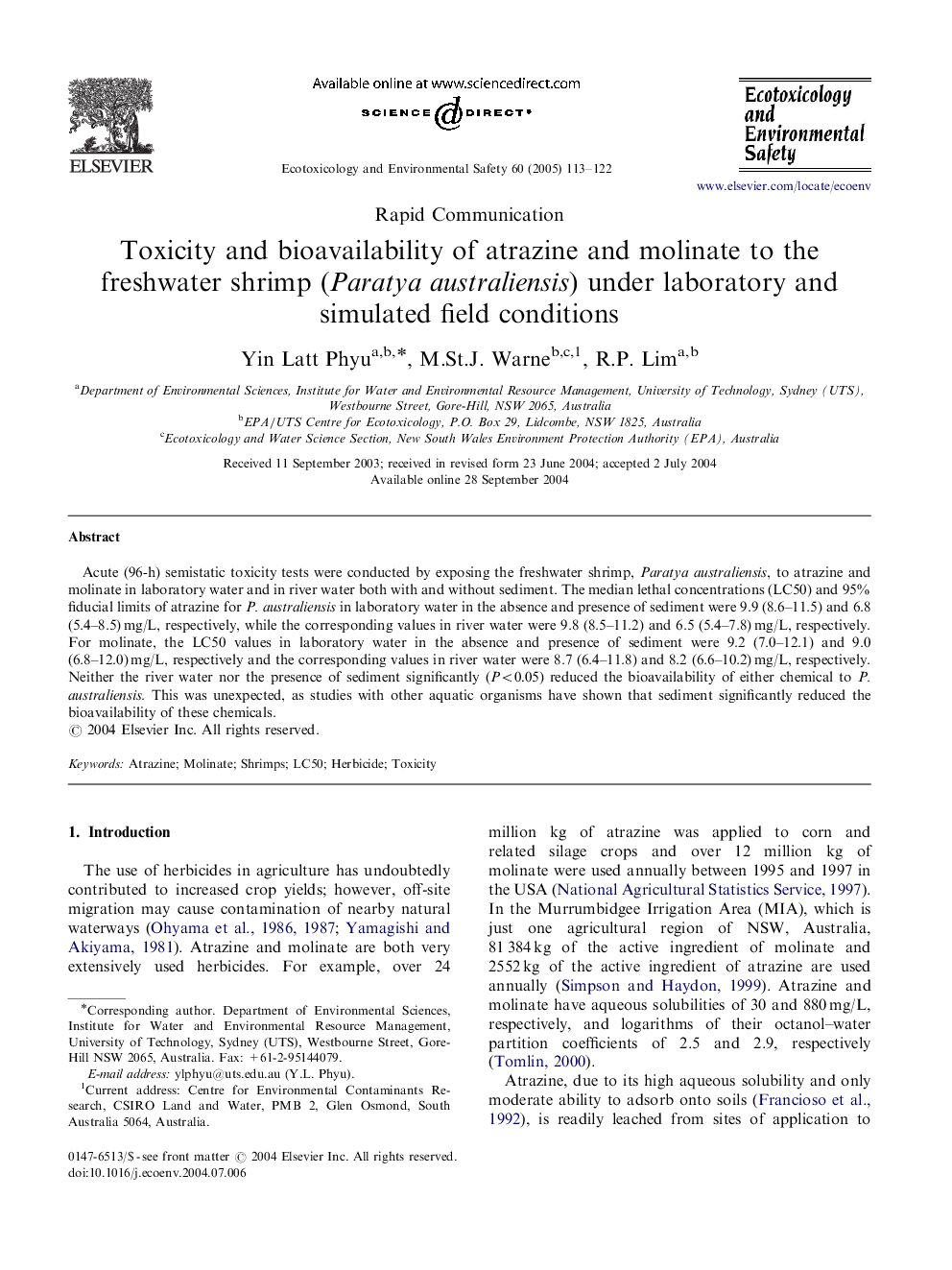| Article ID | Journal | Published Year | Pages | File Type |
|---|---|---|---|---|
| 9454821 | Ecotoxicology and Environmental Safety | 2005 | 10 Pages |
Abstract
Acute (96-h) semistatic toxicity tests were conducted by exposing the freshwater shrimp, Paratya australiensis, to atrazine and molinate in laboratory water and in river water both with and without sediment. The median lethal concentrations (LC50) and 95% fiducial limits of atrazine for P. australiensis in laboratory water in the absence and presence of sediment were 9.9 (8.6-11.5) and 6.8 (5.4-8.5)Â mg/L, respectively, while the corresponding values in river water were 9.8 (8.5-11.2) and 6.5 (5.4-7.8)Â mg/L, respectively. For molinate, the LC50 values in laboratory water in the absence and presence of sediment were 9.2 (7.0-12.1) and 9.0 (6.8-12.0)Â mg/L, respectively and the corresponding values in river water were 8.7 (6.4-11.8) and 8.2 (6.6-10.2)Â mg/L, respectively. Neither the river water nor the presence of sediment significantly (P<0.05) reduced the bioavailability of either chemical to P. australiensis. This was unexpected, as studies with other aquatic organisms have shown that sediment significantly reduced the bioavailability of these chemicals.
Related Topics
Life Sciences
Environmental Science
Environmental Chemistry
Authors
Yin Latt Phyu, M.St.J. Warne, R.P. Lim,
